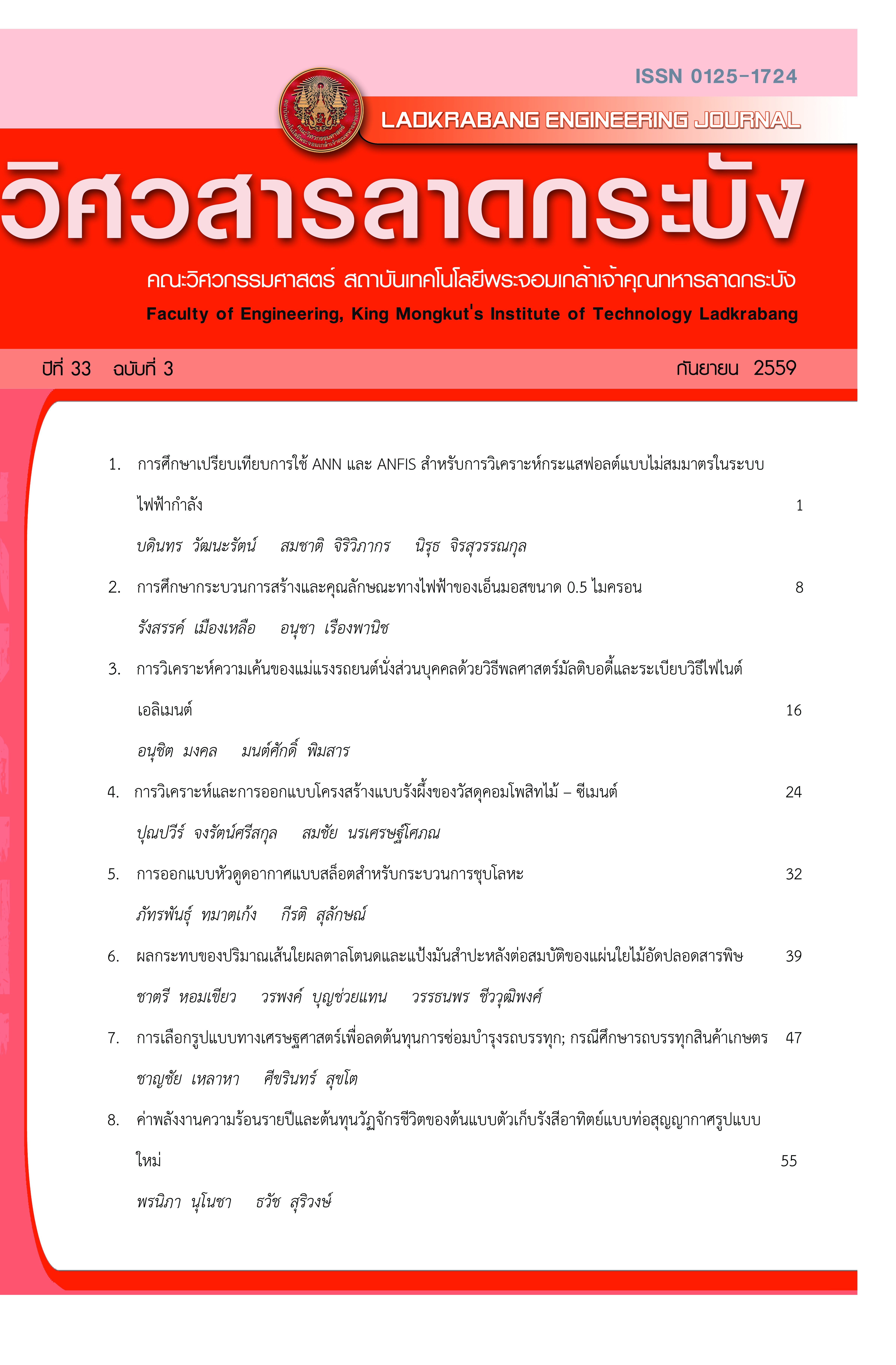Effect of Palmyra Fruit Fiber and Tapioca Starch Contents on Properties of Non-Toxic Fiberboard
Keywords:
fiberboard, rubberwood sawdust, palmyra fruit fiber, tapioca starch, hot compressionAbstract
Production of fiberboard using palmyra fruit fiber as reinforcement and tapioca starch as binder is an innovation of this product. Therefore, the objective of this research was to study the effect of palmyra fruit fiber and tapioca starch contents on mechanical and physical properties of fiberboard. The materials were manufactured into sample fiberboards using a hot compression machine with temperature 190 oC, pressure 13.8 MPa and time 30 min. According to the results, addition of palmyra fruit fiber 7% resulted in internal bond strength, modulus of rupture and modulus of elasticity increased clearly. However, the increasing additions of palmyra fruit fiber reduced water absorption slowly. Furthermore, an increase of tapioca starch contents in fiberboard resulted in internal bond strength and water absorption decreased; however, modulus of rupture and modulus of elasticity significantly increased with tapioca starch contents.
References
[2] R. Hashim, N. Said, J. Lamaming, M. Baskaran, O. Sulaiman, M. Sato, et al., “Influence of Press Temperature on the Properties of Binderless Particleboard Made from Oil Palm Trunk,” Materials and Design, Vol. 32, pp. 2520-2525, 2011.
[3] R. Hashim, S. Hamid, O. Sulaiman, N. Ismail, M. Ibrahim, and H. Jais, “Extractable Formaldehyde from Waste Medium Density Fibreboard,” Journal of Tropical Forest Science, Vol. 21, pp. 25-33, 2009.
[4] I. Ali, K. Jayaraman, and D. Bhattacharyya, “Effects of Resin and Moisture Content on the Properties of Medium Density Fibreboards made from Kenaf Bast Fibres,” Industrial Crops and Products, Vol. 52, pp. 191-198, 2014.
[5] M.T. Paridah, A.H. Juliana, Y.A. El-Shekeil, M. Jawaid, and O.Y. Alothman, “Measurement of Mechanical and Physical Properties of Particleboard by Hybridization of Kenaf with Rubberwood Particles,” Measurement, Vol. 56, pp. 70-80, 2014.
[6] Japanese Industrial Standard (JIS) A 5905, Fibreboards, 2003.
[7] C. Homkhiew, S. Rawangwong and W. Boonchouytan, “Influence of Wood Species and Thickness Sizes on Mechanical and Physical Properties of Binderless Particleboard,” Ladkrabang Engineering Journal, Vol. 33, pp.18-23, 2016.
[8] H. Bouafif, A. Koubaa, P. Perre and A. Cloutier, “Effects of Fiber Characteristics on the Physical and Mechanical Properties of Wood Plastic Composites,” Composites Part A: Applied Science and Manufacturing, Vol. 40, pp. 1975-1981, 2009.
[9] C. Homkhiew, T. Ratanawilai, S. Rawangwong and W. Boonchouytan, “Effect of Temperatures and Water Types on Water Absorption of Rubberwood Flour-Polypropylene Composites,” Ladkrabang Engineering Journal, Vol. 32, pp. 49-54, 2015.
[10] K.B. Adhikary, S. Pang and M.P. Staiger, “Long-Term Moisture Absorption and Thickness Swelling Behaviour of Recycled Thermoplastics Reinforced with Pinus Radiata Sawdust,” Chemical Engineering Journal, Vol. 142, 190-198, 2008.
Downloads
Published
How to Cite
Issue
Section
License
The published articles are copyrighted by the School of Engineering, King Mongkut's Institute of Technology Ladkrabang.
The statements contained in each article in this academic journal are the personal opinions of each author and are not related to King Mongkut's Institute of Technology Ladkrabang and other faculty members in the institute.
Responsibility for all elements of each article belongs to each author; If there are any mistakes, each author is solely responsible for his own articles.






